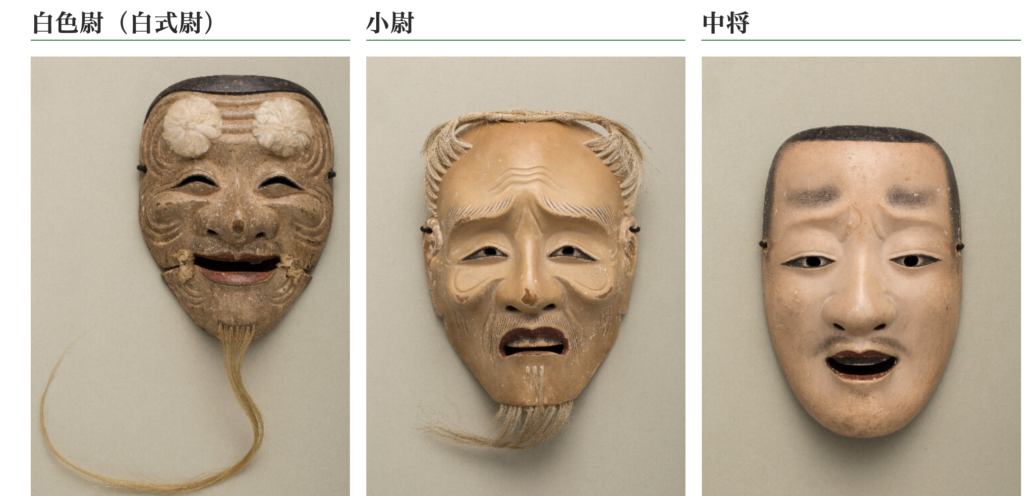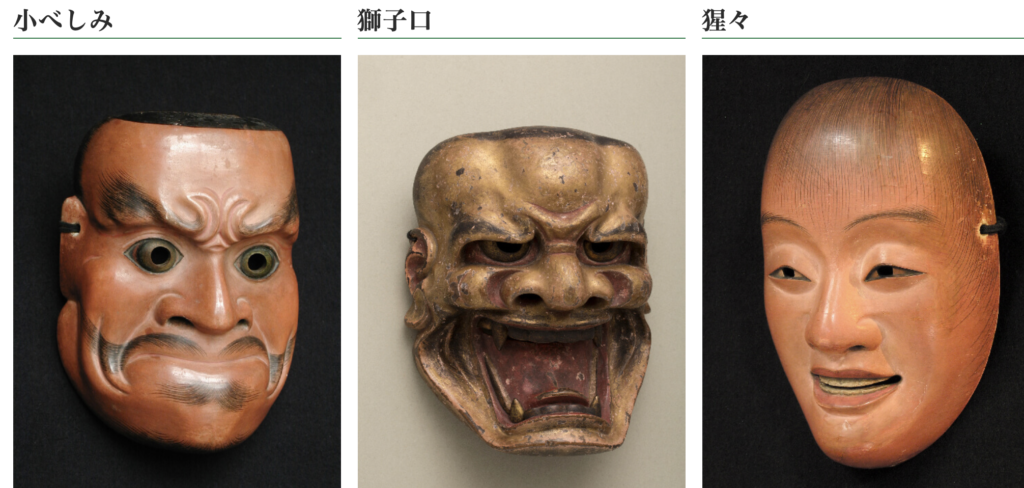In Noh theatre, masks are more commonly used compared to other Japanese traditional performance such as Kabuki or Japanese dancing. This is because of dance style established by ” kata” meaning forms. Noh performance is composed of two parts, one is singing “Utai” and the other is dancing “Shimai” that means dancing style.
The creator of most of pieces of Noh, Kan-ami and Ze-ami established the forms and movements which are supposed to performed without emotions. On the contrary, in Japanese dancing or Kabuki, performers must learn to take some postions which look actually like looking at flowers or having some drinks. In Noh theatre, the performer will be focused on the form or position itself without imagining yourself being in the situation of story. It leaves 100% to the audience to relate and interpret what you see and you hear . Therefore, mask is used to make clear if the character is young, old., men or women and sad or happy to be performed.

Noh theater costumes and masks are very well defined for each role. Some of masks and costumes are well known ,not only for the name like Shakespeare ,but also the quality of techniques and design by artisans. As there is no costume designer or art director, Artisans who are specialised in Noh costumes study by themselves the history of story and puts more efforts in the pieces which will be wear for many decade

It is very interesting to admit that many audiences enjoy performance of Noh still today, its wordings, songs and the style of dance are exactly the same as in 16th century. Why is it so attractive, compared to modern performances such as Opera, Movies or Musicals? As Noh is performed also at Shintoism Shrines as god offering, some pieces have some spiritual value even if there is no audience. It is true that I am energised after watching performance. These tones and vibration maybe have a influence on our brain to relax. I am not joking. My Master of Noh says that if the audience falling asleep meaning that the performance is stable and good.
I was learning Utai and Shimai in Kyoto in a Kongo house. Kongo is one of the Sarugaku Tribes that still today contineus to perform and teach the traditional Noh. Because of its location in Kyoto, many old families and old artisanal artists have been students since several generations. On the top, there are many business people whose family have been established in Kyoto since 4-5 centuries . I was 23 years old going there from Kobe, nothing to do with Kyoto, I was so excited to meet and listen to the insider stories of famous artisans and traditional business families. My lesson was only about 30-45 minutes but I used to spend 3-4 hours listening to other people’s conversations and lessons. That was really a enriching time that seems to wast of time as I was not practicing. The real investment was the relationship and listening to the stories of other successful family over centuries. Now that I live outside Japan, I realised how precious these encounters were in the House of Kongo. They plan to come and perform in Paris in September 2023. I am very excited about it.
references:
http://www.kongou-net.com/miryoku.html
https://www.nohgaku.or.jp/guide/能の面